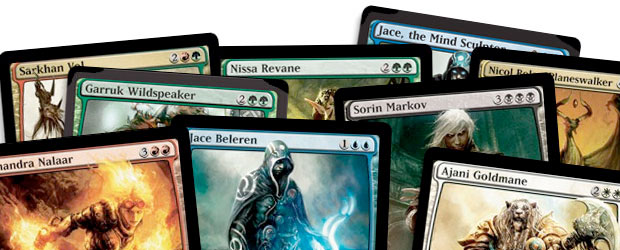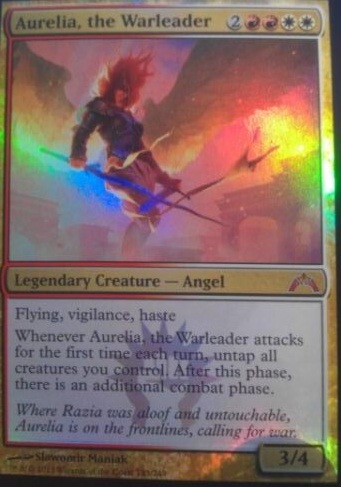One of the more conflicting aspects of Magic: the Gathering is the transaction involved in buying and selling cards. For as long as I can remember when I began to participate in Magic: the Gathering forums, card prices have always been a huge part in discussions to the point that it becomes a never ending argument between the buyers and the sellers.
This post will discuss on buying and selling and card prices. If ever that I feel that I want to post about trading, I might just do so if I don't get lazy.
First of, I have an outlook that "There is an essence of a schmaker (or schmacker) in every buyer and seller."
What is a schmaker? Unfortunately, it can't be considered as a real word. I can't even be sure of the spelling and I would have to make use of my best guess of its spelling. As far as I can remember, a schmaker can be described as one who tries to obtain a card at a very low price or value (to the point that he has to lie about the card's actual value) and subsequently sell the card at maximum profit. A favorite scenario of a schmaker transaction involves the supposedly lowly 0/1 Birds of Paradise:
Schmaker: That Birds of Paradise that you have with you is a bad card. A 0/1 flyer can't do much. A 5/5 Shivan Dragon is better.
Note: In its heyday, a Birds of Paradise reached a value of $10 or more. Having been reprinted several times has made it more available thus the lowering of its current price value. A Shivan Dragon though has never met the level of value of a Birds of Paradise.
Noob: But the BoP has a nice ability to add any color mana...
Schmaker: Think about this: The 5/5 Shivan Dragon can deal 5 damage. The 0/1 BoP can't do anything with its 0 power.
Noob: (begins to buckle to pressure) But...
Schmaker: Plus, the 5/5 Shivan Dragon can stop attackers. The 0/1 BoP does not have the toughness to block any creature.
Noob: Well, if you say so.
Schmaker: I'm doing you a favor. I'll buy your BoP at <shamefully low price>.
To continue with the scenario, the schmaker will sell the BoP at its actual value, sometimes even jacking up the price a few notches above the current value.
Several questions would come to mind. Is the schmaker truly at fault here? Did he "commit" a crime? Is the schmaker obligated to inform the BoP owner of the true value of the card?
Ethically speaking, the schmaker is not doing the right thing. Unfortunately, there is no such thing as ethics in Magic: the Gathering. One can probably discuss it at length but sadly it can fall into deaf ears. Besides, even professionals fail to follow the ethics of their profession. How much more a hobby that doesn't need a degree in college?
What could the noob have done to prevent the said transaction? In this hobby, the noob should have been knowledgeable enough to know how the BoP is such an important card. Knowing is only a part of being able to assess if a card is good or not.
To make the long story short: a schmaker makes a transaction unfair. Both sides can not be labeled as schmakers though both sides can accuse the other as such. Simply put, one side has to be "considered" at a disadvantage and the other at an advantage.
So, is there such a thing as a fair deal? Yes and no. It all depends on the buyer if the deal is fair. For those who are not familiar to buying and selling (or the term business, for that matter), BUYING AN OBJECT REQUIRES AN AGREEMENT BETWEEN BOTH PARTIES. Before such an agreement would occur, there might be a reduction of price. One might ask, who has the upper hand in a sale? Is it the seller or the buyer? As almost always the case, it is the seller who dictates on the price of the object. The buyer only needs to agree or disagree on that price. The buyer can attempt to ask for a lower price otherwise a decision has to be made on whether a sale would occur.
Can a buyer complain that a seller's price is too high? Of course he can but he can only do so much. If such is the price of the seller, any of the possible events can happen:
- The seller can sell it to someone else.
- The seller would not be able to sell it but would still be able to include the card (or cards) in a trade with a different player.
- The seller realizes that the said price is too high and will reduce the price. This would happen only if the said overpriced card remains unsold after such a long time. (If one realizes it, this is how a business decides upon items that will be included in a special promotion of having reduced prices. These items have been on display for quite a time and are hard to sell.)
What is the alternative for the buyer in a failed transaction? The buyer can go look for another seller or several other sellers. In business, this can be termed as canvassing for prices. If the failed transaction involves in-demand cards, it is highly likely that:
- The price is the same with the other sellers.
- The card is not available with other sellers.
- The price is different. If lower, then it's good. If higher, then it's bad.
So, the buyer AGREES to the price. The price might be considered as high or it can also be considered as low. The important point is that an agreement is made thus a sale occurs.
If a buyer continues to say that the price is too high, then this is where my point on "one side at an advantage and the other side at a disadvantage" comes in. Can the seller be considered as a schmaker? If the buyer wants to say so, then by all means he can do so. But still, the buyer AGREED to the price so such a schmaker label on the seller only reflects badly at the buyer also.
Where do these prices come from? Several resources can be used to determine card prices. One reliable site is starcitygames.com. Unfortunately, the prices are in dollars and the dollar exchange rate varies everyday.
Is there some higher being who controls these prices to be higher or lower? The aforementioned site raises its price according to:
- Rarity (a card being hard to find e.g. only 1 copy for every 2 boxes, etc.)
- Demand from players, which can be caused by
- Inclusion in top tier decks that have won international tournaments
Despite that a card would probably be priced too high, the point of the matter is, players would still buy the card/s because they need it. If I'm a seller and I know that a player would buy the card at such a price then I will continue to sell the card AT THAT price and not at a lower price. THAT IS NOT HOW BUSINESS WORKS.
To add, people grumble about how gasoline prices are way too high but they still continue to buy gasoline.
Yes, Magic: the Gathering is not the same as gasoline. But Magic: the Gathering is similar to gasoline because money can be involved in an exchange.
But wait. Magic: the Gathering should not be considered a business, should it? It would be ironic if Magic should not be considered as a business. A booster pack is not free thus it also entails that what is inside the booster pack is also not free.
To sum up this very long post: before complaining about a seller's price being too high, the buyer should put himself in the seller's shoes and think: "Would I sell at a lower price?" If so, who then becomes the schmaker and who has become the schmaked?
Magic: the Gathering is not a cheap hobby. A casual player though can continue to enjoy the game without spending too much. But one can not have the best deck without spending anything.










